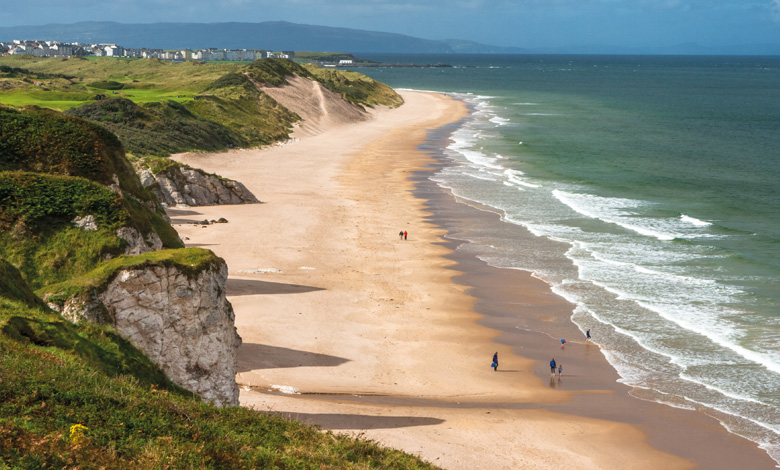
Geothermal: A pathway to heat decarbonisation
30th May 2023
Emissions reductions for industry: Lessons from Germany
30th August 2023Progress in offshore wind infrastructure development

The Department for the Economy (DfE) and The Crown Estate announced a statement of intent to establish offshore wind leasing in Northern Ireland in January 2023.
The announcement, made on 16 January 2023, seeks to build on the Northern Ireland Energy Strategy, which establishes a commitment to diversify the renewable generation mix with a commitment to offshore wind forming a part of the future renewable electricity mix.
The Energy Strategy Action Plan 2022, published on 16 January 2022, included Action 14 to “develop an action plan to deliver 1GW of offshore wind from 2030”. However, the recently published 2023 action plan only included one mention of offshore, simply stating that “work also continues” on delivering offshore wind in Northern Ireland.
Previously, the direction of offshore renewable energy policy was driven by the Offshore Renewable Energy Strategic Plan 2012-2020. It identified the potential of up to 900MW of offshore wind and 300MW of tidal energy that could be developed in Northern Ireland’s waters.
In 2011, the UK and Irish governments signed a memorandum of understanding which clarified the marine jurisdiction of both states and the waters around Northern Ireland, which led to the announcement of three leases in October 2012.
However, at the end of 2014, it was announced that a £1 billion plan to build up to 120 wind turbines off the coast of Northern Ireland had been abandoned, with the developer blaming delays to new market and incentive arrangements.
In 2019, a Department for the Economy report stated that Northern Ireland’s coastline was not suitable for offshore wind infrastructure development due to likely objections at how they would appear, meaning that Northern Ireland was excluded from the 2019 leasing round by The Crown Estate.
The Department for the Economy stated: “The purpose of this statement of intent is to outline the ways in which the two organisations will work together to enable leasing for offshore wind in the Northern Ireland marine area, in parallel with work to address relevant regulatory and planning challenges in conjunction with other government departments.”
In the Republic of Ireland, the Irish Government announced the provisional results of its first ever offshore wind auction in May 2023. Over 3GW of capacity were procured from four offshore wind projects which will deliver over 12TWh of renewable electricity per year, with an unexpectedly low weighted price of €86.05 MW/h. This is less than the maximum €150 MW/h allowed for in the auction and it is also less than the average current price of wholesale electricity which is around €120 MW/h.
Peter Russell, Director of Electricity and Security of Supply at DfE said: “Our ambition of delivering 1GW of offshore wind energy is Northern Ireland’s most ambitious energy infrastructure plan, with the potential to supply enough energy to power one million homes. The statement of intent is a major milestone for the Department for the Economy and The Crown Estate towards unlocking the potential of the Northern Ireland seabed and achieving the Energy Strategy vision of self-sufficiency in affordable renewable energy.”
Gus Jaspert, Managing Director of Marine at The Crown Estate said: “We are highly committed to working in partnership to sustainably manage the seabed and the natural environment for its many users, and to unlocking its potential to support the transition to a net zero energy future. This statement of intent marks an important step forwards, laying the groundwork for building the right conditions for offshore wind leasing and realising the potential benefits for the people of Northern Ireland – local economic investment, low-carbon electricity, and a more sustainable and secure long-term energy supply.”
